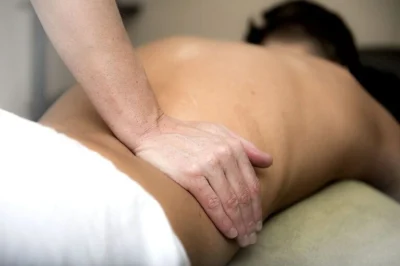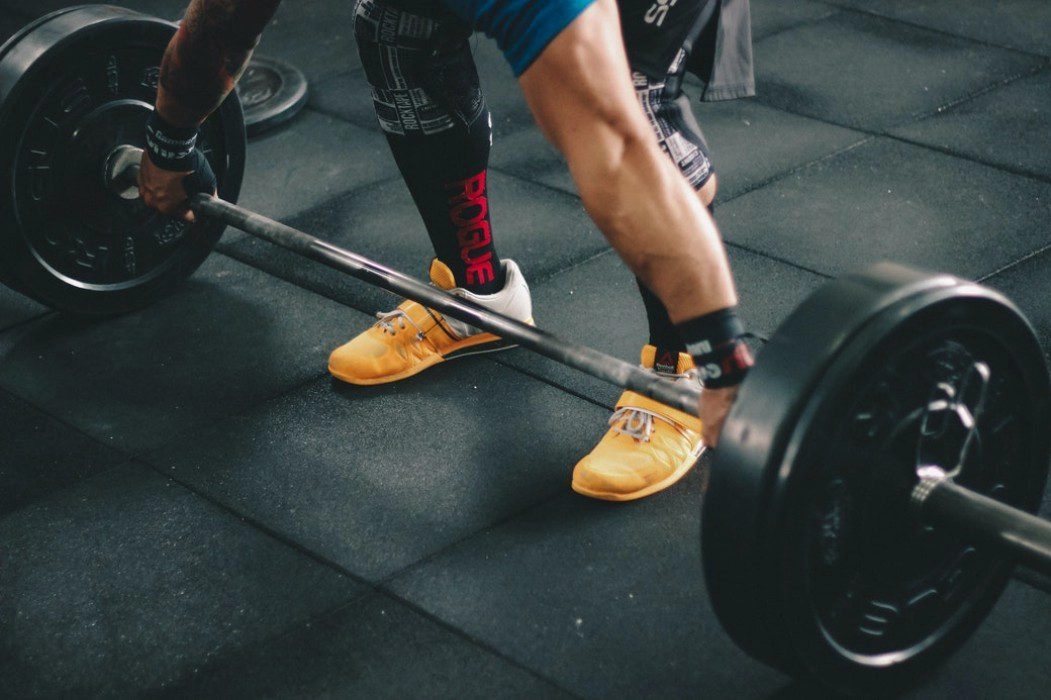Is It Normal To Have Lower Back Pain After Deadlifting?
Most people feel a little (or a lot) sore after a strenuous workout. And deadlift, when done right, can be a serious workout. But there’s a big difference between soreness and injury. It’s not expected to have a back injury after deadlifting. An injury is a sign that something is wrong. Most of the time, injuries during deadlifts are caused by improper form. And getting the form right on a deadlift isn’t the easiest thing to do, so don’t feel bad if you’ve injured yourself. But how do you know if you’ve been injured or are just experiencing some natural muscle soreness?
Soreness vs. Injury
Pain is a matter of perception, so it can be challenging to describe. Most people instinctively know the difference between natural soreness from a workout and the pain from an injury. But sometimes it’s not so easy to tell the difference. Soreness is usually characterized by stiffness, tightness, and achy muscles. Plus, it tends to fade after two or three days. On the other hand, pain from an injury typically causes sharp and insistent pain, especially during specific movements. The pains of muscle soreness tend to be shallow and spread over an entire muscle or muscle group. Pain from an injury tends to be deeper and is often described as stabbing or sharp.
Common Lower Back Injuries From Deadlifting
The deadlift is an exercise with a relatively wide range of motion and incorporates several different joints. Most injuries suffered during deadlifts are non-specific low-back injuries(1), meaning they’re usually sprains or strains. However, it is possible to suffer more severe injuries during a deadlift, such as a herniated disc. But, if you use proper form during the lift, the risk of herniated discs is relatively low.
1) Sprains vs Strains
Sprains and strains are different, although many use the terms interchangeably. A sprain happens when the ligaments that hold a joint together (like those in spinal vertebrae) become torn. (2) A strain happens when the muscles are torn or overworked to the point of injury.
2) Herniated Disc
A herniated disc happens when a fluid-filled sac between the vertebrae bulges out. Sometimes, this causes no noticeable symptoms, while other times, it causes pain due to the disc pressing on a nerve. Sprains, strains, and herniated discs can all be treated conservatively. However, if you wake up with severe back pain and a fever, it could be a sign that something is wrong. You should see a medical professional to rule out severe conditions immediately.
Deadlift Injury Lower Back Pop
Some people have experienced an audible popping in the back during a deadlift. Sometimes, this is nothing to worry about, and sometimes, it’s likely related to an injury. If you experience a pop in the back during a deadlift, but there’s no pain to accompany it, it’s likely just the sound of gas escaping from a joint in your back. This is known medically as crepitus and happens during a spinal alignment, such as when you see your chiropractor for a back adjustment. If you experience pain with the popping, it’s time to see a medical professional.

An Anchorage, AK Chiropractor Tip: How To Heal Lower Back Pain After a Deadlift?
Healing a lower back injury from a deadlift is a matter of severity. The more severe the injury, the longer it will take to heal, and the more you will benefit from professional help. Luckily, most injuries aren’t too severe and can be addressed at home. The pain you’re experiencing is the best gauge of severity. If you can’t stand up straight or experience debilitating pain with regular movements, you should see a medical professional such as a physical therapist, chiropractor, or physician. If the pain is bearable, follow the protocols below and give it a few days to see if it improves.
1) Take a break.
You may be tempted to return to the gym, but don’t do it until your back feels normal again. It’s good to rest for the first two days to give your back a chance to recover.
2) Use ice.
Ice your back every few hours for 15 to 20 minutes. Make sure to place a cloth or towel between the ice pack and your skin to avoid damage from the cold. Ice is best used for the first three days; then, you can incorporate heat. Use heat after three days. After three days, if you’re still experiencing pain, you can incorporate heat to soothe and relax the area. Use ice for 15 to 20 minutes, wait 30 minutes, then use a heating pad for 15 minutes. Repeat every few hours.
3) See a Chiropractor
You can see a chiropractor during any stage of your recovery. In Anchorage, AK there are multiple chiropractic offices available. If the pain is bad enough, you may make it your first stop because chiropractors can help weightlifters in many ways. However, if it has been four days or more and your pain isn’t going away, you should immediately make an appointment with a certified chiropractor. Remember: staying out of the gym is best until you feel normal again. Hitting the weights again too soon can put you out of sorts for weeks instead of days. If you think you injured your back while deadlifting, avoiding straining your back muscles for two days is good. If your pain is still prominent after 48 hours, you’ll want to seek help from a medical professional. Chiropractors are ideally suited for dealing with these kinds of injuries, especially when they employ massage and physical therapists on-site. Luckily, Better Health Chiropractic Anchorage combines these three treatments to get you back in the gym quickly.
Recovery Time
Most people with deadlift back injuries recover within a week or two. Of course, this depends on the severity of the injury and what they do to promote healing. For more severe injuries, like a herniated disc, recovery time is a little longer: 6 to 8 weeks. Again, this varies depending on the person and their healing tactics. (3) Generally, seeing a medical professional, like a chiropractor based in Anchorage, AK, can help speed up the process, but it can’t make it happen overnight. To promote healing, follow these additional tips on how to relieve back pain fast:
- Make sure you have a comfortable bed for your back.
- Eat healthily and avoid processed and inflammatory foods.
- Do some mild stretching as soon as you feel up to it.
- Avoid lifting heavy things.
- Maintain proper posture as much as possible.
An Anchorage, AK Chiropractor Answers: Is Deadlifting Bad For the Back?
When done correctly, deadlifting can be good for your back. Maintaining proper form throughout the entire movement doesn’t put undue stress on your spine. Instead, you strengthen the entire posterior chain without overloading the back. It’s all about executing correctly, using the right muscles, and not overdoing it.
How To Recover From Deadlift Lower Back Injury: Conclusion
Some exercises are a little riskier than others. The deadlift is one of them. But many people deadlift safely and properly every day without experiencing injuries. If you have a deadlifting injury, follow the directions above and ask yourself if you’re doing the exercise properly. Ask a personal trainer or a knowledgeable friend to analyze your form and give you pointers so you don’t injure yourself in the future. If your form is good, talk to a chiropractor – there are many here in Anchorage, AK – about your posture and back. Weak muscles and a misaligned spine may also contribute to deadlifting injuries and should be corrected as soon as possible.










